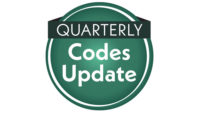I have participated in both U.S. and international codes and standards development for over 40 years and, although the process can be cumbersome, and, yes, a bit frustrating, I believe in the basic principles of consensus and due process which are the foundation of all valid standards and codes development processes. In my opinion, an additional foundational strength of the model code development process is the principle of referencing consensus product standards in model codes which results in the ability for supply chain to efficiently provide safe and high-quality products to the marketplace based on consistent and nationally accepted requirements. All of these principles were highlighted in recent decisions of the International Plumbing and Mechanical Officials (IAPMO) Board of Directors related to industry appeals on proposed revisions to the IAPMO Uniform Mechanical Code.
ASA and HARDI have been engaged with other industry organizations in pursuing changes to the IAPMO UMC related to the use of A2L refrigerants and the acceptance of certain joining systems used in refrigeration systems. Recently, the final stage of the process was completed with the IAPMO Board considering petitions from industry to reconsider decisions reached by the UMC Technical Committee (TC) and the IAPMO Standards Council (SC). Fortunately, the IAPMO Board reviewed the petitions and ruled in support of the industry on the following proposals:
Use of Concealed Spaces as Plenums: The current UMC allows for the use of concealed building spaces or independent construction within buildings to be used for ducts or plenums. The IAPMO TC and SC supported a proposal to eliminate this allowance from the UMC. The Board supported industry opposition to this change on the basis it would create conflict with other sections of the UMC. As a result, the current requirements will remain in place.
Incorporation of Current ASHRAE 15-2022 Requirements: The IAPMO TC and SC rejected industry proposals to update the text of Chapter 11 of the UMC to be consistent with the most up-to-date requirements of ASHRAE 15 – 2022. Industry petitioned the IAPMO Board to reconsider this decision for several reasons with the major reason being the potential confusion in the marketplace if the current requirements of ASHRAE 15 are not adopted into the UMC. The IAPMO Board granted the industry petition and Chapter 11 will be updated to be consistent with ASHRAE 15 – 2022.
Referencing of Current Revision to UL-207: The IAPMO TC and SC rejected industry proposals to incorporate the current edition of UL 207 Refrigerant-Containing Components and Accessories, Nonelectrical. Industry petitioned the IAPMO Board to reconsider the decision based on potential confusion in the marketplace based on products being certified to the most recent version of the UL Standard and not previous versions as well as a lack of technical justification for not referencing the current standard. The IAPMO Board supported the industry petition, and the current version of UL 207 will be referenced in the UMC.
In addition to the above IAPMO Board actions, we also received a positive decision from the IAPMO SC in late 2022 related to our appeal on the TC Committee decision to accept a proposal to update the UMC to require all joints on refrigeration piping installed in concealed spaces shall be brazed. We appealed this decision to the IAPMO SC stating the proposed restriction would eliminate the use of joining systems and piping materials currently accepted in concealed locations without any technical justification for the restriction. The SC supported our position and removed the proposed restriction from the next publication of the UMC.
A big thank you to our friends at the Air-Conditioning, Heating and Refrigeration Institute (AHRI) who played a key leadership role in bringing together all industry stakeholders to advocate for sound industry positions throughout the development process.
An additional foundational strength of the model code development process is the principle of referencing consensus product standards in model codes which results in the ability for supply-chains to efficiently provide safe and high-quality products to the marketplace based on consistent and nationally accepted requirements.
ASHRAE WINTER MEETING UPDATES
I attended the ASHRAE Winter Meeting and provide the following highlights:
The first edition of the Water-Energy Nexus Design Guide is under development. The scope of the Guide is for nonresidential and residential applications, not including process facilities (factories, power plants, industrial facilities, mining, etc.)
- ASHRAE has formed a Residential Buildings Committee (RBC) that is responsible for identifying major residential trends impacting the practice of HVAC&R, informing the ASHRAE leadership and membership of these trends and their potential impacts, and making recommendations on new activities and policies in response to these trends. The committee will identify, recommend, and coordinate relationships with societies and organizations that focus on residential buildings. To learn more about the RBC click here.
- The ASHRAE Handbook is widely used by design professionals and the Chapter related to Water Treatment is up for revision this review cycle leading to a publication in 2027. I have requested the opportunity to participate on the Chapter Review Task Group so stay tuned for more information as the project develops.
- The ASHRAE 15 Committee has focused significant time on the adoption of new requirements related to the use of Low Global Warming Potential (LGWP) refrigerants, such as A2Ls. These new requirements have been adopted into the 2022 version of the Standard and making their way into the various model codes for adoption at the State and Local government levels.
- ASHRAE 15.2 for Residential Refrigeration Systems was first published in 2022. The 2023 work plan was discussed at the Committee including the consideration of addressing combined water heating and space conditioning systems and looking at outdoor refrigeration systems.
ASME A-112 PLUMBING FIXTURES COMMITTEE
I also had the opportunity to attend the American Society of Mechanical Engineers (ASME) A-112 Plumbing Fixtures Committee meeting. A significant discussion was held related to the U.S. EPA WaterSense Program, a voluntary partnership program sponsored by the U.S. EPA. The program develops product water-efficiency standards and certifies products to those standards with the goal of the WaterSense-labeled products using at least 20 percent less water than regular models. Many ASA member companies produce and distribute WaterSense-labeled products and ASA is a Partner Member of the Program.
The WaterSense Program staff reported on the status of the U.S. EPA WaterSense Program working with Amazon to ask manufacturers to provide Universal Product Codes (UPC) for all WaterSense labeled products in lieu of the standard method of providing model numbers. Although this effort is described as voluntary, it was noted that only companies that provide the UPC for products labeled to the WaterSense specifications will receive the Amazon “Climate Pledge Friendly” designation on the Amazon e-store. Amazon is also working with the U.S. Department of Energy and their Energy Star labeling program on a similar effort.
There was significant discussion on the issue especially related to the providing of UPCs becomes defacto mandatory based on the inability to receive the Climate Pledge Friendly designation unless the UPCs are provided, even when the products are U.S. EPA WaterSense Labeled. In addition, there was concern about the complexity of the use of a UPC vs. model numbers and a potential issue of having a clear way to validate the UPCs provided are directly related to the WaterSense labeled products. In addition, concern was raised about potential confusion in the marketplace concerning WaterSense labeled products and Amazon Climate Friendly Pledge designated products.
As always, I encourage readers to reach out to me at anytime if you have questions or would like more detail on subjects I cover in my quarterly updates. I sincerely hope that through my updates you have a better understanding of the U.S. and international standards and codes processes and more importantly, see how those processes and the published standards and codes resulting from those processes have a direct impact on your businesses and on every segment of the Plumbing and HVAC Supply Chains.





